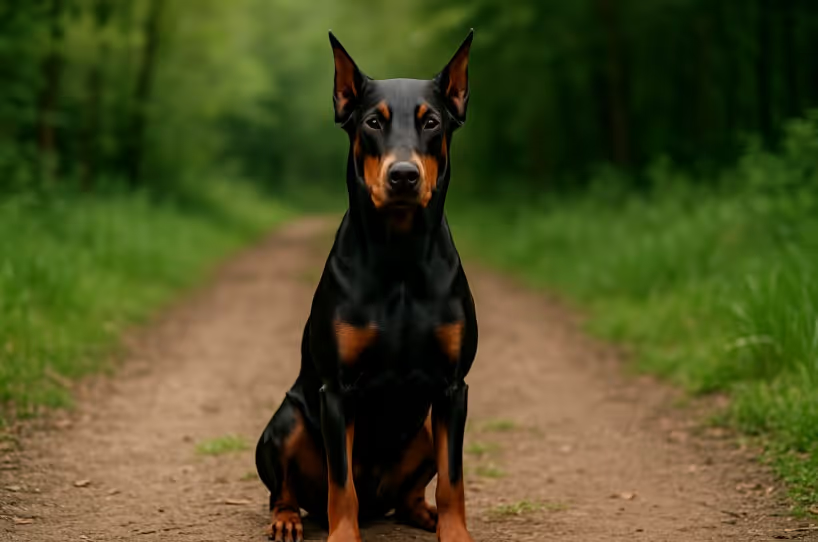The Doberman Pinscher is an athletic, alert, and highly intelligent breed renowned for its loyalty and protective nature. Originally bred as a guard dog, this sleek powerhouse is both elegant and intimidating. Despite their reputation, Dobermans are affectionate, people-oriented, and thrive when included in family activities. With proper training and socialization, they’re excellent companions for active households who can provide mental and physical stimulation.

The Doberman Pinscher was developed in the late 19th century by a German tax collector named Karl Friedrich Louis Dobermann, who sought a loyal protector and working companion. A mix of breeds such as the Rottweiler, German Pinscher, and Weimaraner, the Doberman quickly gained recognition for its courage, speed, and obedience. Over time, selective breeding softened its once-intense nature into a more balanced, family-suitable temperament while retaining its impressive guard dog instincts.
Dobermans are low-maintenance in the grooming department but benefit from regular coat care and hygiene upkeep.
Recommendations:
This breed is built for action and excels in high-intensity routines.
💡 Tip: Dobermans thrive with a “job” to do — consider dog sports or advanced training.
Dobermans are extremely intelligent and eager to work, but require confident leadership.
Dobermans require a balanced diet that supports muscle maintenance and joint health.
Choose breeders who screen for heart issues, hip dysplasia, and von Willebrand’s disease.
Resources:
📝 Tip: Always ask for health testing documentation and meet the parents if possible.
1. Are Doberman Pinschers aggressive?
Not inherently. A well-socialized Doberman is alert but not aggressive. Early training shapes temperament.
2. Are Dobermans good family dogs?
Yes, especially with active families. They are protective, gentle with children, and deeply loyal.
3. How much do Dobermans shed?
They shed moderately, especially in spring/fall, but regular brushing helps control it.
4. Can a Doberman live in an apartment?
They can adapt to apartment life if exercised daily. Without proper stimulation, they may develop behavioral issues.
5. How long do Dobermans live?
The average lifespan is 10–12 years, with proper care and health screening.